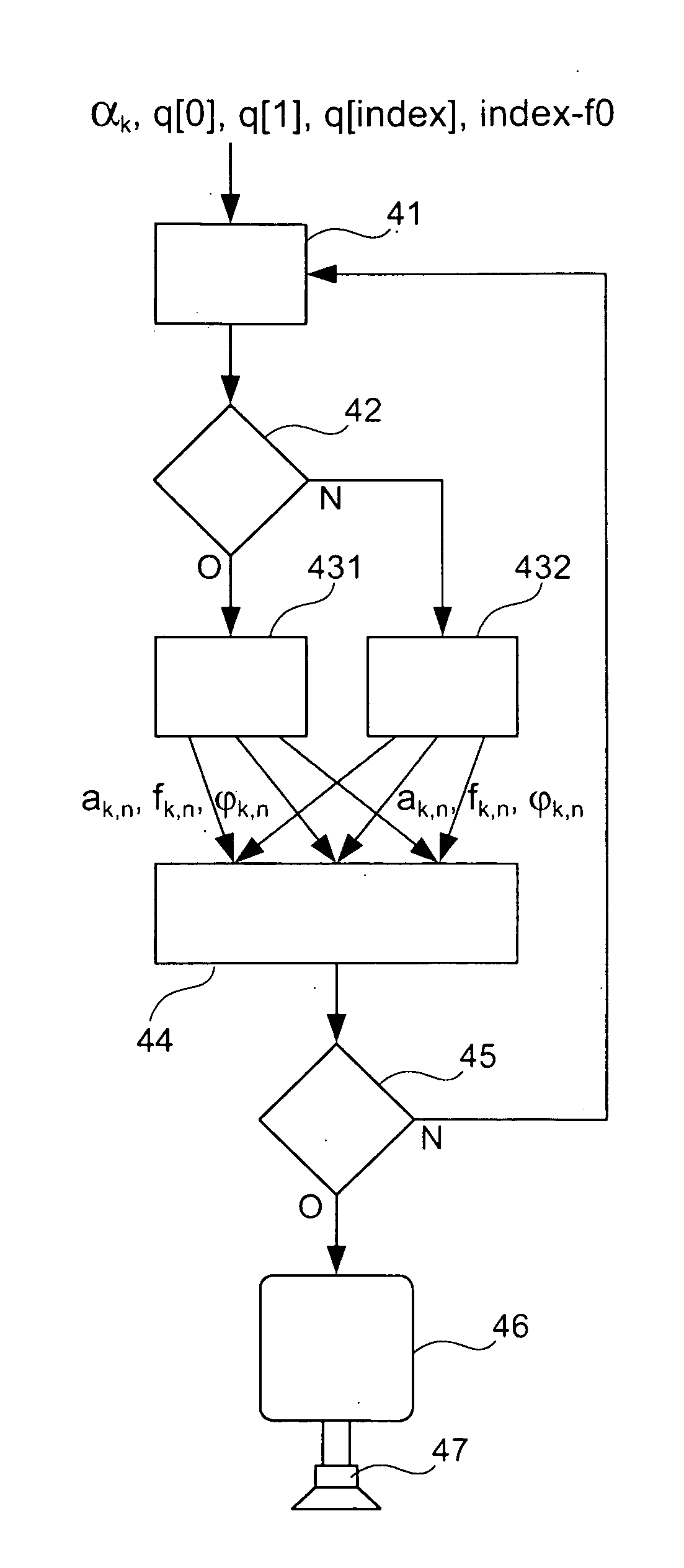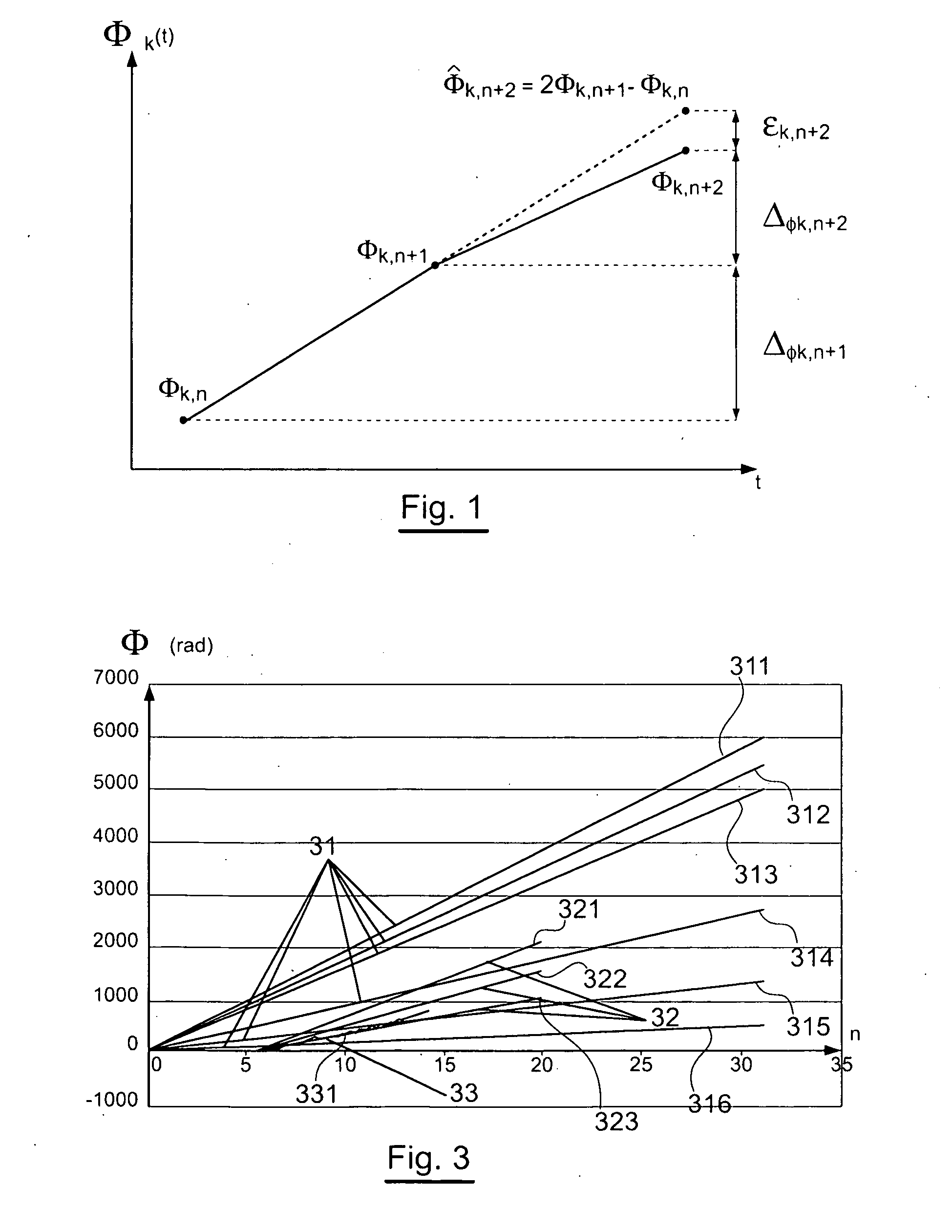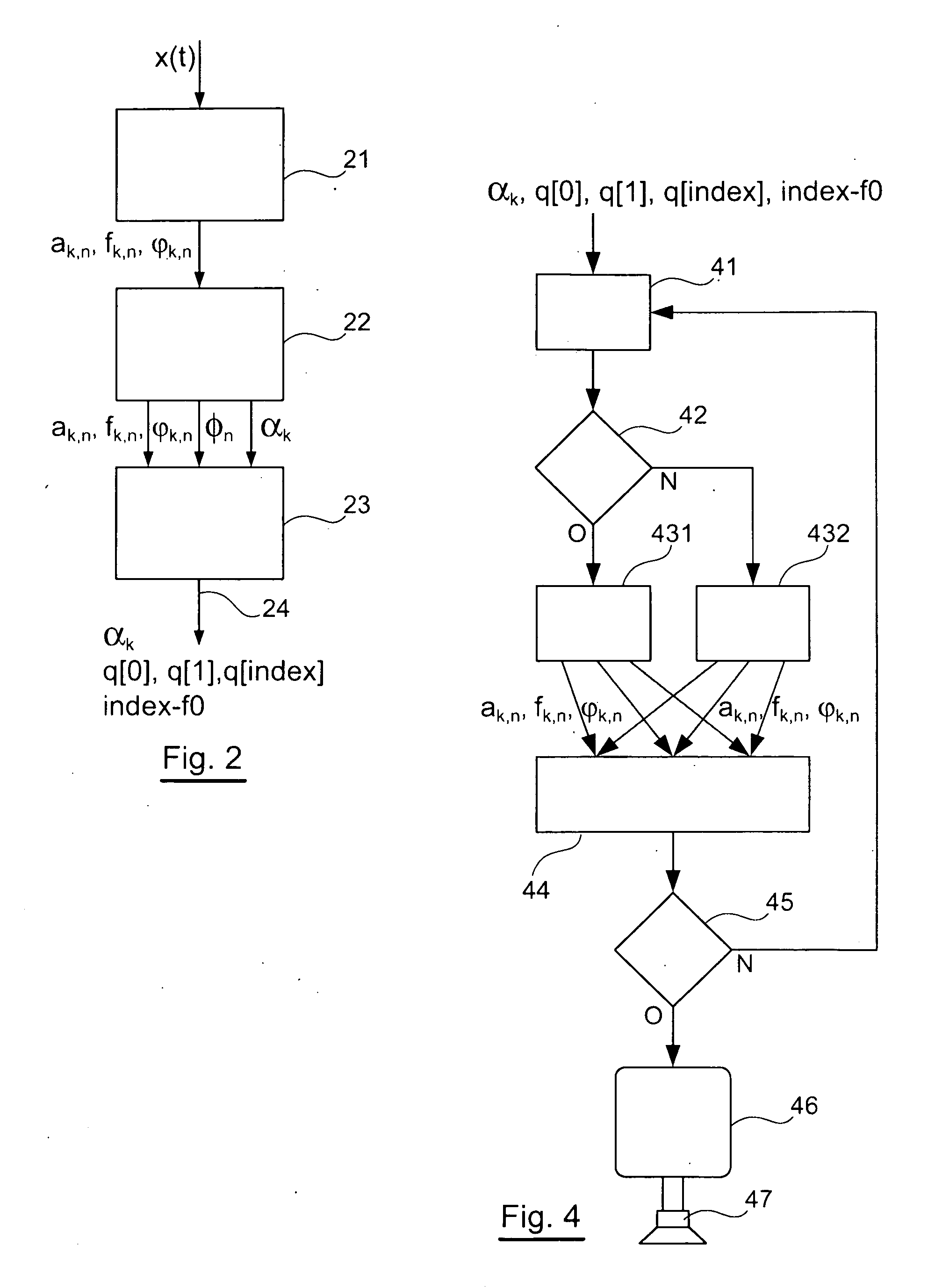Method for encoding a source audio signal, corresponding encoding device, decoding method, signal, data carrier and computer program product
a source audio signal and audio digital technology, applied in the field of audio signals, can solve the problems of insufficient encoding of sinusoidal components, insufficient encoding of a sinusoidal component, etc., and achieve the effect of reducing the number of steps of quantification, encoding, transmission or storage, and improving the accuracy of encoding
- Summary
- Abstract
- Description
- Claims
- Application Information
AI Technical Summary
Benefits of technology
Problems solved by technology
Method used
Image
Examples
first embodiment
[0139]In other words, and in a first embodiment, each component indexed k, with an evolved phase noted Φk,n will be perfectly described by the transmission (or storage) of an evolved phase Φl,n of a reference component indexed l chosen from among the sets K of the components of the signal, the factors αk as well as the parameters bk,n with the index k having a value different from that of the index l.
second embodiment
[0140]In a second embodiment, for each reference evolved phase, a reference value Φn common to all the components of the signal to be transmitted is transmitted, and then for each component, the factors αk and the parameters bk,n with 0≦k≦K−1.
3. Quantification and Encoding
Step 23
[0141]The knowledge of the development of the frequencies and of the phases of each sinusoidal components as well as the relationships of similarity between each of them is exploited here for optimal encoding.
[0142]Following the matching step, the sinusoidal entities are grouped together in two families. These are a first family comprising links of harmonicity and a second family of components that are mutually independent (of the type similar to the entity 33 presented with reference to FIG. 3).
[0143]In the context of the transmission of entities belonging to the first family, it is then necessary, for a component indexed k, to transmit the reference signal whose evolution in phase and frequency is denoted ...
PUM
 Login to View More
Login to View More Abstract
Description
Claims
Application Information
 Login to View More
Login to View More - R&D
- Intellectual Property
- Life Sciences
- Materials
- Tech Scout
- Unparalleled Data Quality
- Higher Quality Content
- 60% Fewer Hallucinations
Browse by: Latest US Patents, China's latest patents, Technical Efficacy Thesaurus, Application Domain, Technology Topic, Popular Technical Reports.
© 2025 PatSnap. All rights reserved.Legal|Privacy policy|Modern Slavery Act Transparency Statement|Sitemap|About US| Contact US: help@patsnap.com



